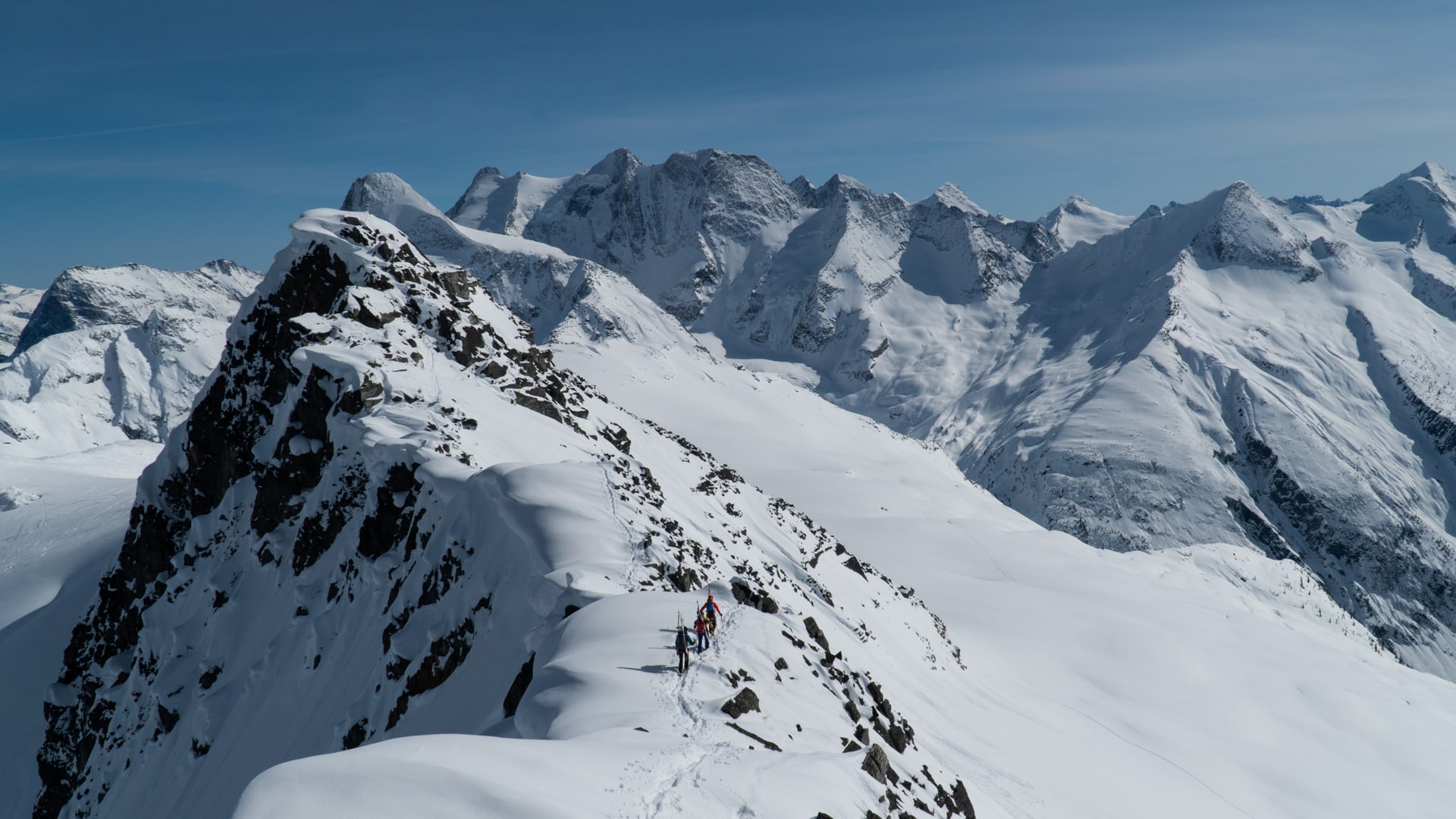The Jupiter Traverse is known throughout the Canadian ski touring community as the ultimate ski-mountaineering classic of Rogers Pass. The traverse crosses the three summits of Mt Jupiter: Castor Peak (2886m), Pollux Peak (2777m), Leda Peak (2701m). Starting at the Illecillewaet parking lot, the route follows the nearly flat Asulkan Trail to the morainal terrain of the Mousetrap. A gentle climb up the crevassed Asulkan Glacier gets you to the Sapphire Col (2590m) where you’ll find the Sapphire Col Hut, basically a steel box. From there, it’s an up-and-down bootpack over the three peaks and down the Thorington Route, a steep, glaciated, 1000m descent to the valley bottom. As a more conservative option during times of snowpack uncertainty, you could continue along the ridge towards the Asulkan Pass (2350m) to avoid the large convexity of the Thorington. All in all, the Jupiter Traverse is a rewarding journey across the Asulkan Basin requiring the full extent of one’s glacier travel and ski-mountaineering skillset. Hands down, I would recommend this epic to anyone with the appropriate mountain skills.
Related: Sapphire Col Traverse: An Alpine High
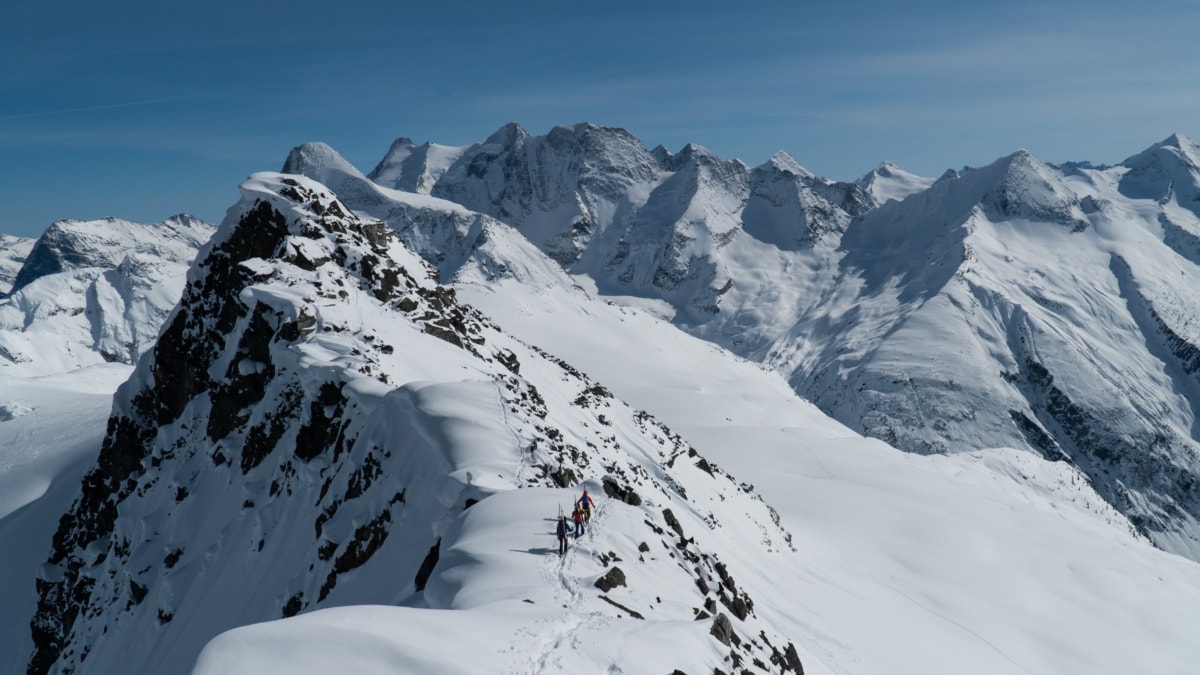
Report from March 17, 2021
Given the long spring days, we began our day at the Illecillewaet parking lot under bluebird skies and warm temperatures. It was 8 AM, a late start by spring standards. We followed the Asulkan Trail, meandering along the Asulkan Brook. In the valley bottom, the sun was already baking areas where it shone. It was mid-March and spring had already arrived at full steam. As the valley narrowed, we stopped for a water break. Mt Jupiter laid there in the distance, towering above the Asulkan Glacier’s icefall. In less than two hours, we would be walking along its crest.
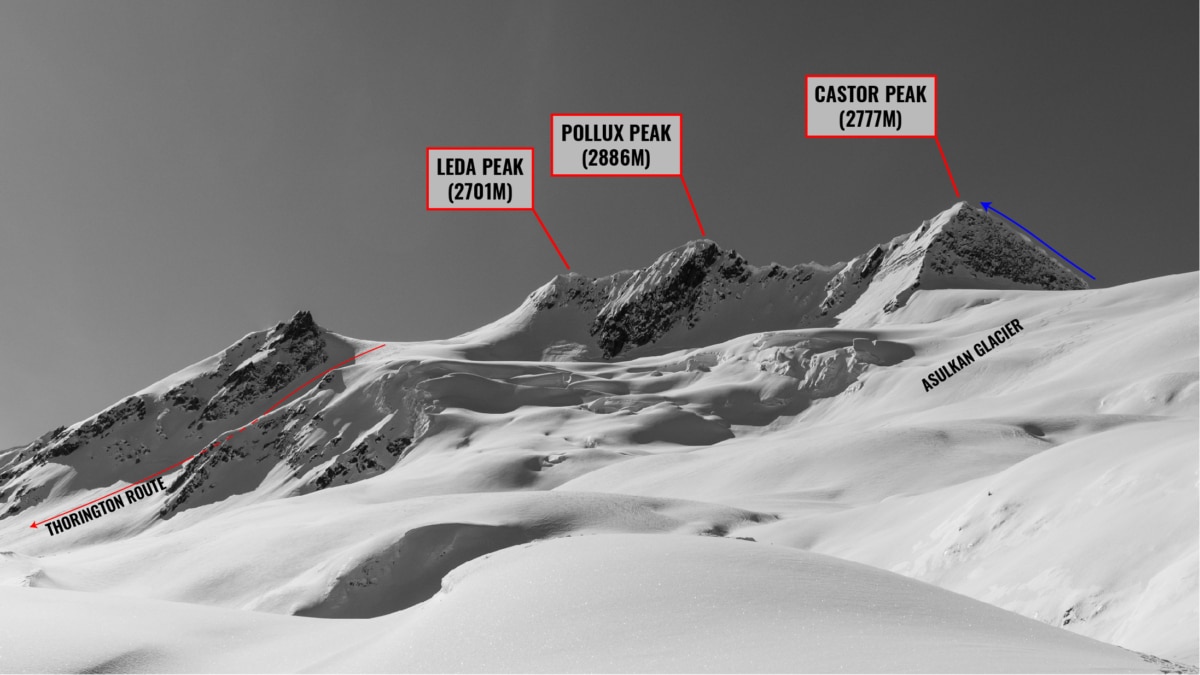
Soon enough, we entered the Mousetrap bounded by a forested hill to the right and an imposing moraine, to the left. Make no mistake: it’s a giant terrain trap through which overhead avalanches would rip. Choose your route wisely to minimize your exposure. Since we weren’t worried about natural avalanche activity at this time of the day, we toured up the center, ducking right onto the forested hill.
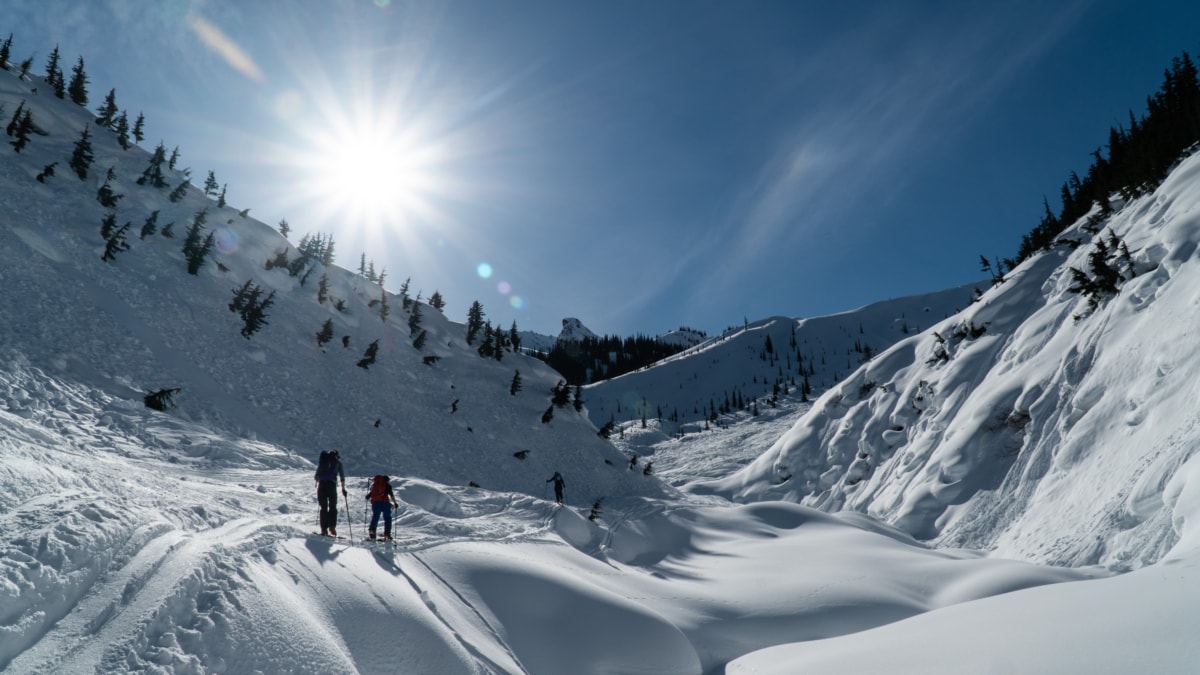
A few switchbacks later, we gained the top of the hill and began the eternal climb up the rolling terrain, smoothed out by the retreating glacier. We traversed right along the top of Asulkan headwall, a steep, rocky face, riddled with twisting gullies in order to reach the base of a large moraine below the Cleaver that provided a better ascent route. Within a half-hour, we reached the base of the Cleaver, a prominent shoulder bordering the Asulkan and Dome Glaciers. Man, was it hot! Luckily, our route kept us on northern aspects where the heat wasn’t as bad. Southern, solar aspects on the other hand were getting absolutely baked – dry loose avalanches were releasing left and right.

We followed the base of the Cleaver, climbing a steep roll to grant us access to the Asulkan Glacier. We then traversed the icy flats, generally aiming for Sapphire Col. After a 1km walk along a gentle grade, we arrived at the bottom of Castor Peak, our first objective. Under the intense sun, the ascent to this point felt like an absolute slog – the heat was the problem.
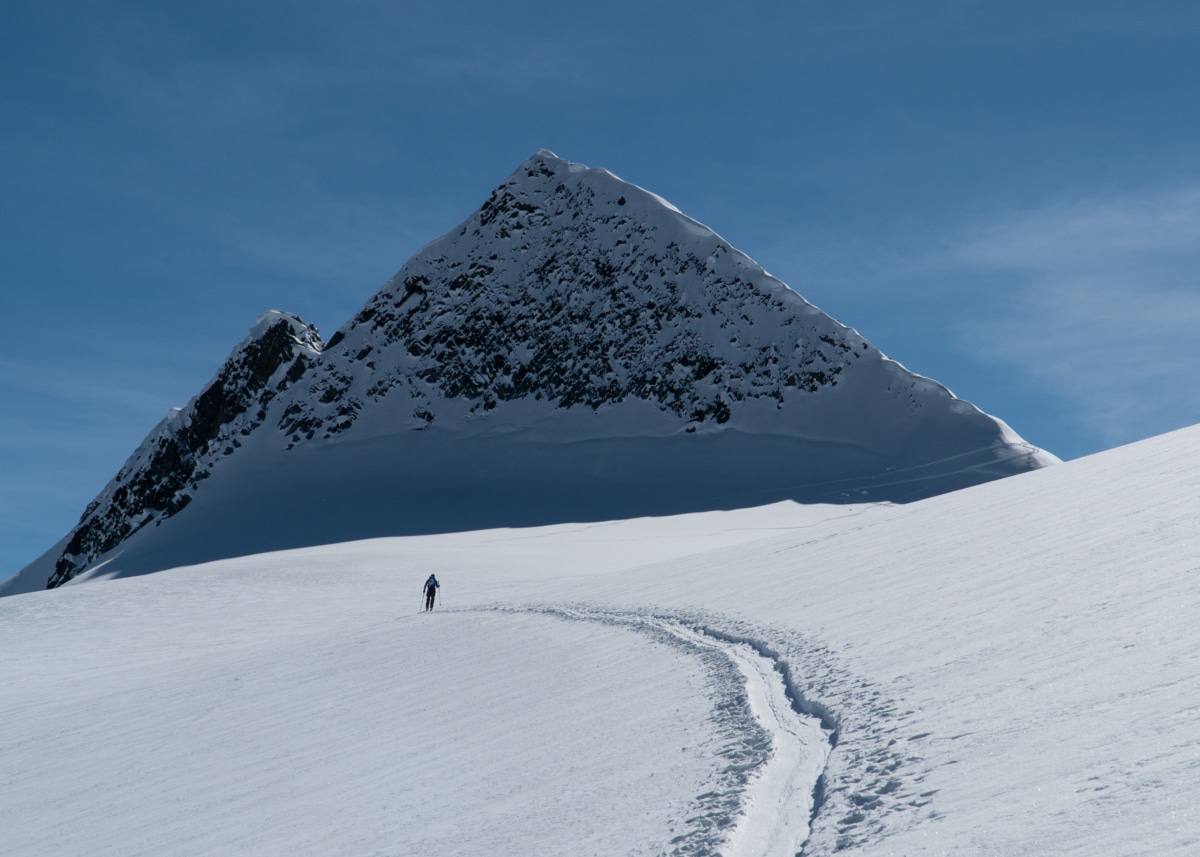
As the light SW winds were warding off the heat, we donned crampons, ice axe, and helmets. By now, the bergschrund separating the glacier from the steep, snowy slope was completely filled in. Without roping up, we booted up the west ridge of Castor Peak, an aesthetic, 45° crest. A short effort got us to the summit, rewarding us with stunning views of Youngs Peak and the Bonney Massif.

Our gaze was now focused on Pollux Peak, the second summit of the Jupiter Traverse. We followed the mellow ridge gently dipping and rising across its 500m length. We stopped merely 50m below the summit, stumped by a slightly technical but exposed crux. Joey and I soloed the short section, a steep, V-shaped ramp leading to a narrow bench. In retrospect, I should have at least removed my skis from my pack to avoid having them scrape against the overhead rock. I then strung some cordelette around a nearby horn and belayed both Freddy and Laurent up a neighbouring pitch, easier but exposed over Mt Jupiter’s south face. During better snow years, this crux shouldn’t be much of a climb. After all that excitement, we summited Pollux Peak, the highest of the three. I took great care in staying far away from the large cornice. A fall here would be fatal.
Cornice Hazard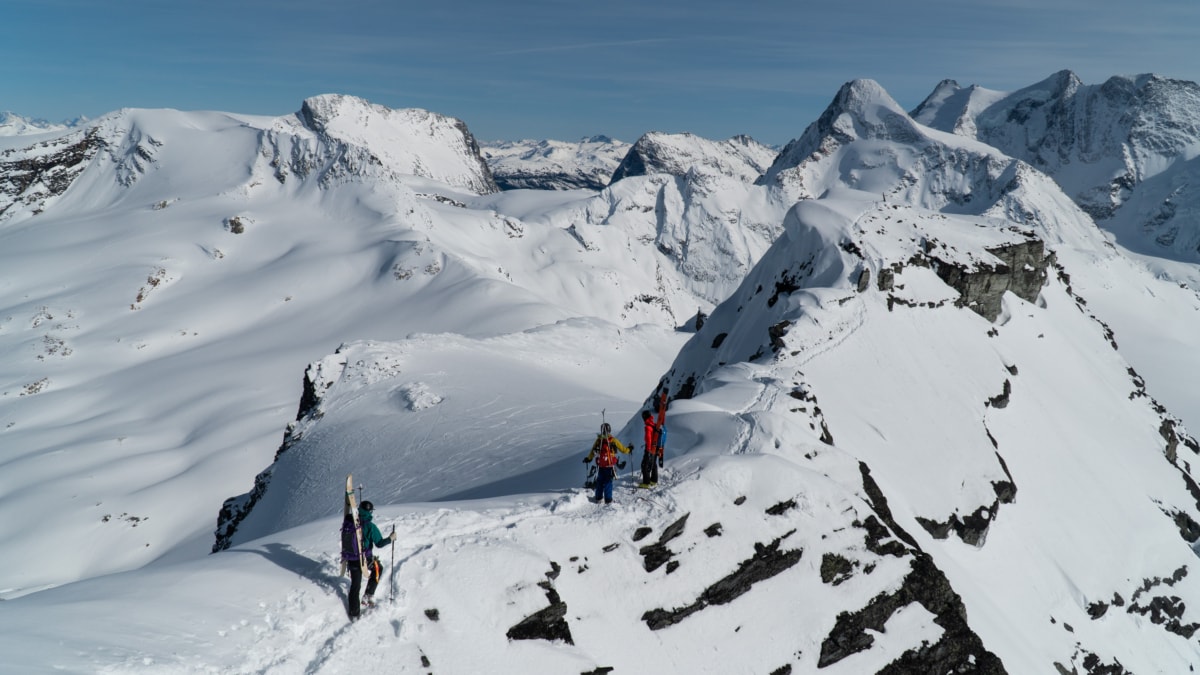
We pressed on, following the straightforward ridge until we arrived at a broken-up section. In theory, the snowy arête could have been downclimbed with crampons and ice axe. In practice, the lethal exposure on both sides justified throwing a rope. We rappeled 20m to the flat ridge below using a recently-built anchor, now frozen in the snow. Perfect!
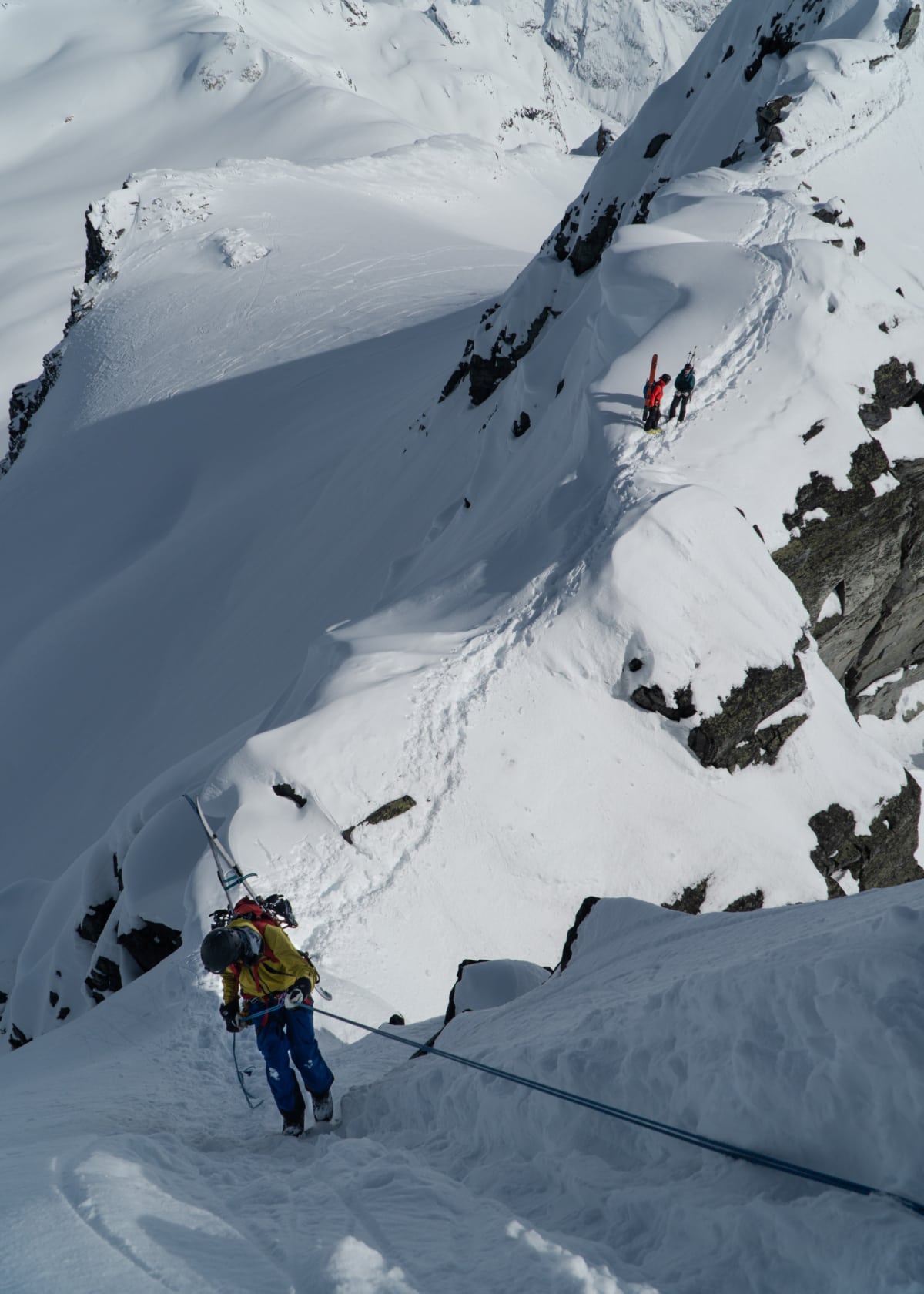
After more bootpacking, we gained Leda Peak, the last summit of Mt Jupiter. What a rush! After admiring the views for one last time, we transitioned for the descent along the Thorington Route. Surprisingly, the slope was pristine – most likely, the overnight winds had covered the existing tracks. We skied down a combination of powder, crust and ice, better than expected after several days of clear weather.

We followed the crest of a long moraine, bordering the Mousetrap. Anything solar was absolutely wrecked, covered with a thick crust that made the skiing difficult. North aspects weren’t so bad. After some half-baked ice-skating and jerky slarving through slush, we made our way back to the Illecillewaet parking lot by 5 PM. What an adventure! The Jupiter Traverse, a true Rogers Pass classic!

Route Info
For more beta on my adventures, check out the Route Map. This online map interface is a repository of Beyond Our Peak’s published ski touring and mountaineering routes. It’s the best way to browse through trip reports. Give it a shot!
